Fall 2014

From the President:
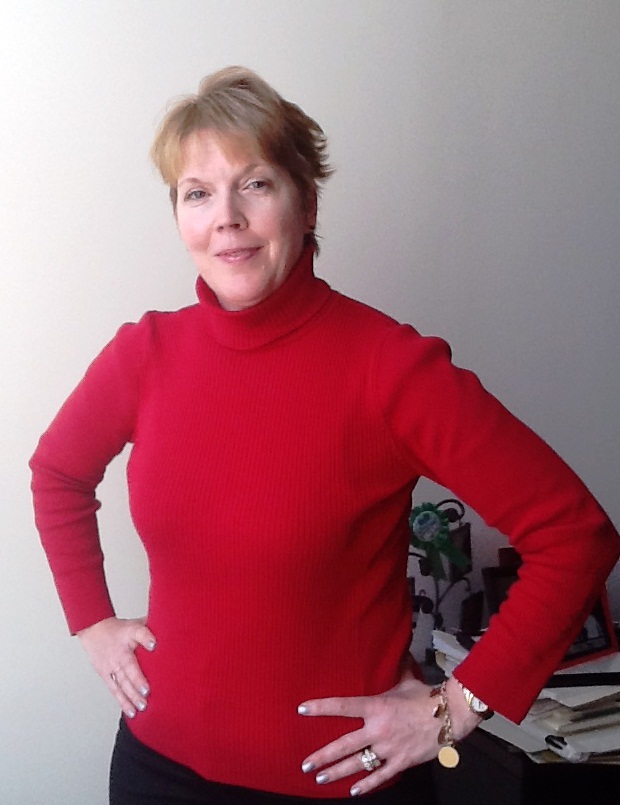 As the days get shorter and the nights get longer, we know that the fall semester will soon be over and that the end of the year is not far off. Since year-end is usually a time of reflection, I cannot help but borrow from Mr. Dickens, “It was the best of times. It was the worst of times.” to help illustrate the realities that many academic libraries face today. Yes, it can be described as the best of times in terms of the available technology, tools and innovations that libraries provide and that student have access to in the library and outside the library. Economically speaking, however, many academic libraries are probably experiencing the worst of times, either with flat budgets making it difficult to keep up with the rising costs of resources or serious budget cuts that severely restrict or reduce the services and resources offered. This dichotomy is challenging to say the least, but the good news is that academic librarians have demonstrated their adaptability, flexibility and resourcefulness in order to meet the needs of evolving student populations.
As the days get shorter and the nights get longer, we know that the fall semester will soon be over and that the end of the year is not far off. Since year-end is usually a time of reflection, I cannot help but borrow from Mr. Dickens, “It was the best of times. It was the worst of times.” to help illustrate the realities that many academic libraries face today. Yes, it can be described as the best of times in terms of the available technology, tools and innovations that libraries provide and that student have access to in the library and outside the library. Economically speaking, however, many academic libraries are probably experiencing the worst of times, either with flat budgets making it difficult to keep up with the rising costs of resources or serious budget cuts that severely restrict or reduce the services and resources offered. This dichotomy is challenging to say the least, but the good news is that academic librarians have demonstrated their adaptability, flexibility and resourcefulness in order to meet the needs of evolving student populations.
While many of us witnessed first-hand the seismic shift from use of print to digital resources, the past few years certainly illustrate the “best of times” for academic libraries since we continually introduce tools and resources to make student access to resources as easy and seamless as possible. Discovery tools are just one example, as is the increased number of e-books found in library collections as well as digital initiatives that are making localized, special collections more readily available and accessible online. Virtual reference and virtual instruction, synchronous and asynchronous, have also contributed to the best of times as have the proliferation of online tutorials and related services that provide support for an increasingly complex array of resources and online classes. Heck, I am amazed that students can obtain PDF files of articles that exist only on microfilm or fiche in our library collection by simply clicking a button. Our students will never have the pleasure of arguing with a microfilm/fiche reader or experience upside down, blurred printouts! Also illustrating the “best of times” is the physical transformations of academic libraries and recent examples include the new Hudson County Community College Library and renovations to the Robeson Library at Rutgers-Camden and the Walsh Library at Seton Hall University, which are featured in this newsletter.
The fiscal realities are daunting and harder to overcome and one can hope that the “worst of times” that many academic libraries are and have experienced will soon be behind us. Although we may have a voice in the budget process and often present budget requests that are lean and mean, campus administrators are usually looking to cut or scale back spending. Especially since state funding remains flat and any significant tuition increases are frowned upon and may incur a decrease in funding. While it may be the “worst of times” it may also provide the impetus to critically examine collections and resources and prioritize what is essential to support our students. It may also be an opportunity to clearly demonstrate how libraries contribute to the success of our students by assessing our resources, services and space in this era of increased accountability.
As noted earlier, librarians are known for being flexible and adapting to change but it is also important to establish some guidelines. In a profession that continues to evolve, it is not surprising that both NJLA and VALE are involved with strategic planning this year to help favorably position our profession and libraries for the future.
With the New Year almost upon us, we can begin to look ahead to opportunities in 2015. "On the Road to Excellence: Library Pathways to Student and Faculty Success" is the theme for the upcoming VALE Users’ Conference, scheduled for Friday, January 9. Melissa Bowles Terry from the University of Nevada Las Vegas is the keynote speaker and she is known for her contributions to the areas of library instruction and assessment. Registration will be open in early December. The theme of the 2015 ACRL Conference is “Creating Sustainable Community” and will be held March 25-March 28 in Portland, Oregon. Finally, “Libraries on the Edge” is the theme of the NJLA Conference so please join us April 20-April 22 as the conference returns to the Ocean Place Resort and Spa in Long Branch.
Nancy
Nancy Weiner is Assistant Director, Access & Information Services, at the David & Lorraine Cheng Library at William Paterson University.
Student-Centered Renovations Bring New Study Space to Paul Robeson Library at Rutgers-Camden
By Jen Hunter
By the second day that the newly renovated second floor of the Paul Robeson Library at Rutgers-Camden was open, it was already packed with students. Part of a larger renovation four years in the making, the second floor was completely remodeled to be a student-centered study space reflecting how libraries of the 21st century are meeting student needs.
It now boasts:
- 14 group study rooms
- 51 individual study carrels
- Separate quiet and silent areas for individual study
The library held the ribbon cutting ceremony on October 9 to coincide with the Rutgers Board of Governors meeting in Camden. Nick Ferraro, class of 2015 and president of the Student Government Association, cut the ribbon. “It looks very nice. From what it used to look like to what it looks like now--it's a total transformation,” he said. “It's a place to practice presentations, to study by yourself or with other people. It's the kind of space that the students have been wanting. It's awesome and it was worth the wait."
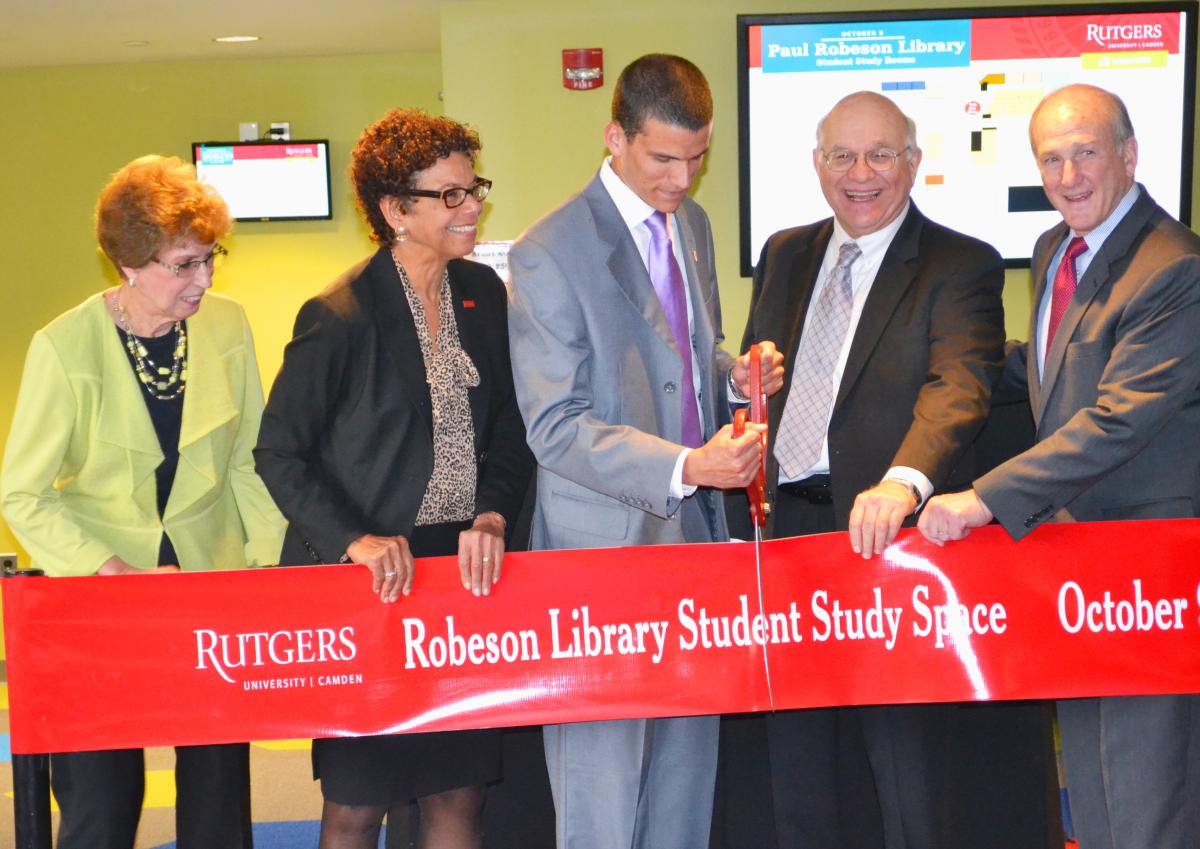
Pictured from left to right: Marianne Gaunt, University Librarian, Rutgers University; Phoebe Haddon, chancellor, Rutgers-Camden; Nick Ferraro, '15 president, Student Government Association; Gary Golden, director, Paul Robeson Library; Robert Barchi, president, Rutgers University. Photo by Jean Madden, reference associate, Paul Robeson Library.
Tiyana Hicks, class of 2015, echoed his sentiments. "I like the new space. It's really well done. I especially like the individual study places. It was really needed."
The second floor is now also home to several librarian and staff offices, specially-assigned graduate student carrels, and special collections.
Equipped with large, wall-mounted monitors, PCs and Apple TVs, the group study rooms, which accommodate groups ranging from six to ten people, are a tucked-away space for students to collaborate on group work. Video cameras in each room also let students film and review practice presentations.
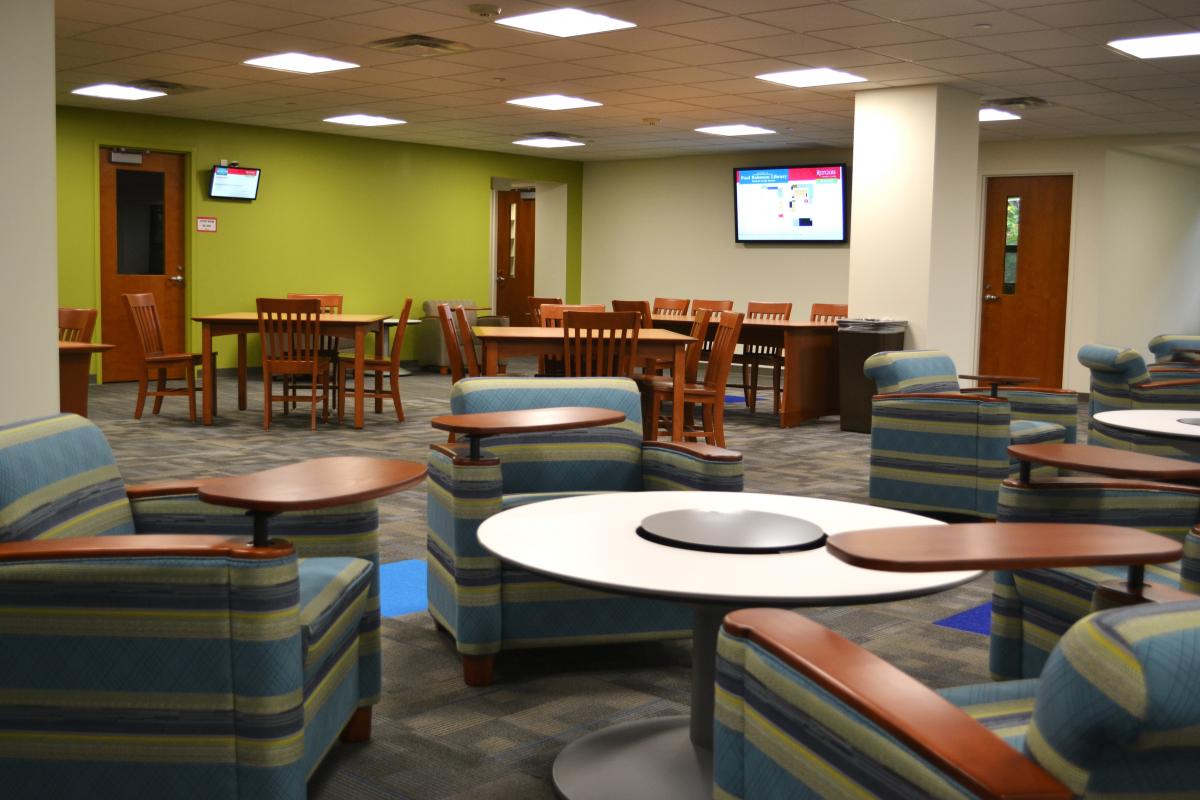
Photo by Jean Madden, reference associate, Paul Robeson Library.
The remodel was the finishing touch on a four-year total renovation project that affected every floor of the library. First, the ground floor was renovated to accommodate nearly the entire book collection using compact shelving. The Nilsa I. Cruz-Perez branch of the Camden County Public Library also moved into the ground floor, as did the Rutgers Future Scholars program. Rutgers Office of Information Technology moved its computer lab to the first floor, and on this floor the library remodeled its librarian offices, periodical section, and lounge and study area.
With the exception of the exterior walls, it’s an entirely new library.
Jen Hunter is a reference librarian at Rutgers-Camden Paul Robeson Library.
Small library – Big Party: International Conference Hosted by the Rutgers Center of Alcohol Studies Library
By Judit Ward and William Bejarano
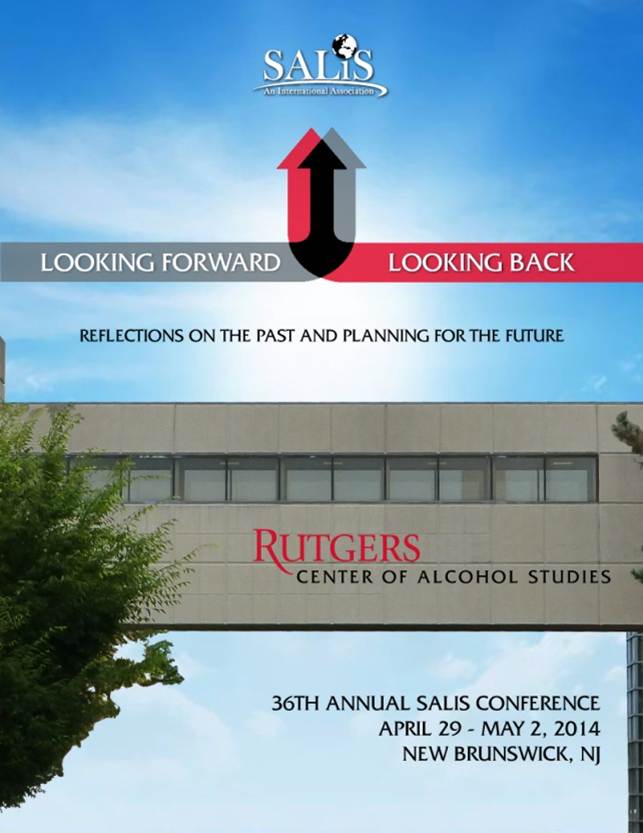 This year the Rutgers Center of Alcohol Studies (CAS) Library, an independent, special library, had the unique opportunity to organize an international conference. The Substance Abuse Librarians and Information Specialists (SALIS) is a small but influential group of information professionals with members from all over the United States, Canada, Israel, Australia, and Europe, with a focus on addictions. The last SALIS conference that Rutgers organized was in 1985. As the birthplace of alcohol science, hosting the 36th Annual SALIS Conference here seemed an appropriate occasion to celebrate significant milestones and anniversaries at CAS, such as the 75th anniversary of the Journal of Studies on Alcohol and Drugs (JSAD), with an appropriate theme “Looking forward, looking back: Reflections on the past and planning for the future”. The conference was held at the Heldrich Hotel in New Brunswick from April 29 through May 2, 2014.
This year the Rutgers Center of Alcohol Studies (CAS) Library, an independent, special library, had the unique opportunity to organize an international conference. The Substance Abuse Librarians and Information Specialists (SALIS) is a small but influential group of information professionals with members from all over the United States, Canada, Israel, Australia, and Europe, with a focus on addictions. The last SALIS conference that Rutgers organized was in 1985. As the birthplace of alcohol science, hosting the 36th Annual SALIS Conference here seemed an appropriate occasion to celebrate significant milestones and anniversaries at CAS, such as the 75th anniversary of the Journal of Studies on Alcohol and Drugs (JSAD), with an appropriate theme “Looking forward, looking back: Reflections on the past and planning for the future”. The conference was held at the Heldrich Hotel in New Brunswick from April 29 through May 2, 2014.
The agenda included formal presentations, posters, and panel discussions. Speakers represented SALIS, government organizations, and Rutgers. The diverse topics ranged from historical to current, theoretical to practical, academic to industry, clinical, biographical, legal, and organizational. The familiar but professional tone of the conference was set by CAS director Dr. Robert Pandina’s recollection of the birth of alcohol science at Yale, followed immediately by former Summer School of Alcohol Studies director, Dr. Gail Milgram, who focused on the early years of alcohol education. SALIS executive director Andrea Mitchell presented on the history of the organization, and provided updates on the SALIS – Internet Archive digitization project to create a better circulating addiction e-book collection.
Current topics included the introduction of the new database (International Alcohol Information Database – Research) and the recently merged Hazelden – Betty Ford Foundation. The overview of the British St. George’s University library’s digitization of the Addicts Index Files was followed by a presentation on practices to survive in difficult times by tailoring library services at the Indiana Prevention Center. A talk highlighted the potentials of legalizing medical marijuana in more states, based on the experience in Washington. Two distinguished professors from Rutgers also contributed to the success. Dr. Michael Lesk from the School of Information and Communication illustrated his talk on changes in research via digital tools with examples from a plethora of sciences. Dr. Helene White of CAS, one of a handful of ISI Highly Cited Rutgers faculty members and co-author of the Rutgers Alcohol Problem Index, reviewed trends and transitions in publication as reflected in her work.
The two panels received great feedback. The first panel entitled Open Access (At what cost?) provided an eye-opening and comprehensive overview of the pros and cons. Paul Candon, managing editor of JSAD, enlightened librarians about the costs of running a scholarly journal. Dr. Jennifer Buckman, Associate Professor at CAS, presented the researcher’s perspective, including their preferences, and financial and time constraints. The librarian’s view was represented by Laura Mullen, Behavioral Sciences librarian at Rutgers University Libraries. A very lively discussion followed and continued later outside the conference room.

The CAS Library scheduled to break their new discoveries on the life of E. M. Jellinek, founding father of alcohol studies at the SALIS conference, after gathering information on his past for six years. The nearly two-hour long panel introduced new data about Jellinek’s early life collected at the CAS archives and from Hungarian sources. With still a lot of white space on the canvas of Jellinek’s life, the six panelists also allowed some speculations and reached out to SALIS members for further resources. The evaluation and analysis of the Jellinek research was summarized by the ultimate Jellinek expert, Dr. Ron Roizen, remotely.
Two poster sessions were offered in a new format, experimenting with an ignite session, which allowed presenters 3-5 minutes to address the entire audience before answering questions by their poster. The strategy worked out wonderfully. The presenters managed to cover their major points in a few minutes, and answered specific questions later. The posters featured addiction-related topics about training medical students in England, the changing role of state documents in the U.S., E.M. Jellinek’s impact in Hungary, and digitization projects at the CAS Library.
Attendees had the opportunity to enjoy the historical atmosphere in many ways, and the field trip to CAS, hailed by everyone, was one of them. The tour allowed browsing the objects on display in the conference room and visiting the library by crossing the famous bridge featured on the cover of the program brochure. Entering the library, guests walked by the world’s first Alcometer, created by Leon Greenberg. The somewhat old-fashioned CAS library impressed many of the participants with its retrofitted signs and pretty card catalog. Historical punchcards from the CAAAL Collection were news to the younger attendees, but prompted a walk down memory lane for seasoned librarians. The tiny Jellinek Corner in the library generated interest toward the Jellinek panel with its “Bunky”, the bust of Jellinek presented as the Jellinek Memorial Award.
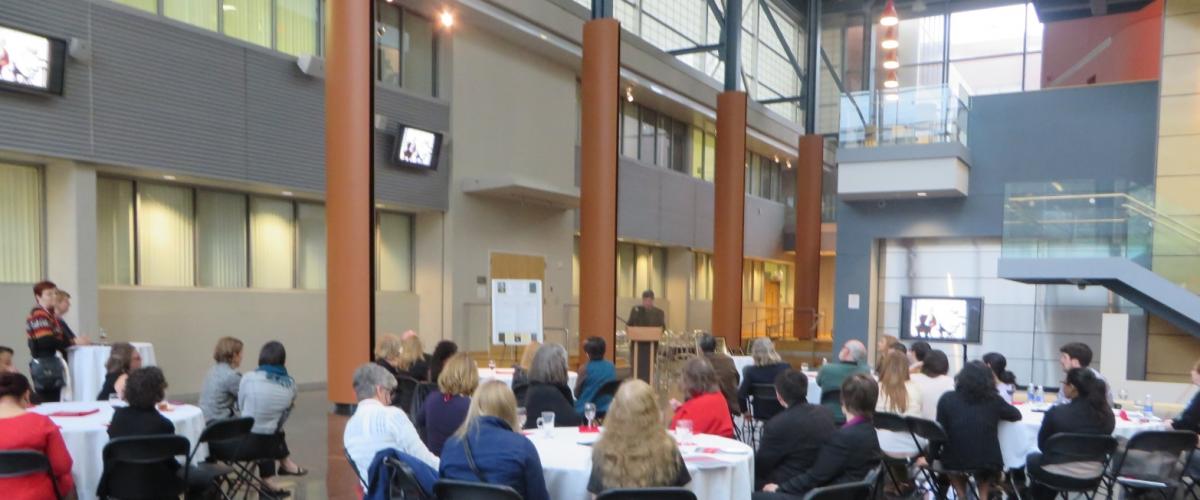
After the tour, participants walked back to the Life Sciences building to “be part of history” as one of the attendees put it. SALIS celebrated the 75th anniversary of the founding of the QJSA together with CAS that afternoon at a relaxed reception hosted by the Center. An overhead slideshow, created in the library from archival resources, was looping on five monitors while people mingled, networked, and enjoyed the wine and cheese. CAS Director Pandina gave a brief talk on the occasion announcing that the journal founded the Howard Haggard Award to honor the most popular articles published over time. As a memento, a cake was cut, which featured the 75th anniversary issue as topping.

Seemingly a daunting task for a small library with two full-time staff members, hosting this conference was an exceptionally rewarding experience. The goal was to create a historical atmosphere and reflect on the past, while thinking about the future from a fresh perspective. By succeeding on this front, we were able to increase the presence of CAS and Rutgers on the international stage. For more details on the conference, please see the special issue of the CAS Information Services Newsletter.
Dr. Judit Ward is Director of Information Services and William Bejarano is a Library Associate at Rutgers Center of Alcohol Studies. Dr. Ward is now chair of SALIS and Mr. Bejarano is on the Executive Board as newly elected Member-at-Large.
Seton Hall’s Walsh Library Undergoes Student-Centered Renovation
By Leah Carton
Students can now work more comfortably and efficiently thanks to renovations recently completed in Walsh Library. New furniture, new computers and new ergonomic equipment has been added to the Library’s Information Commons, silent study rooms and other locations.
Dr. John Buschman, Dean of University Libraries, said these changes were implemented to make the library a learning space that is “comfortable, robust and inspiring on many fronts.” Sophomore Alex Lucanie said she thinks the new and additional furniture will help her academic work. “The tables downstairs will be helpful when studying in a group because, last year it was sometimes hard to find a place to work as a group,” Lucanie said.
Students can now complete their assignments sitting on Herman Miller brand soft seating and on stools at the Izzy café tables. The list of additional new features in Walsh Library include new computer chairs and reupholstered rocking chairs.
“It is already clear that the changes are a boon to students and their work,” Buschman said. “The choice of furniture was made with a lot of care.”
Ten new Macintosh computers and 55 refreshed PCs have been placed throughout the IC, the Curriculum Resource Center and silent study rooms. Two Herman Miller FloArms-mobile arms were funded by the Provost’s Office, Information Technology and libraries. The FloArms-mobile arms allow students and reference librarians to look at computer screens together during consultation. These will be installed at the reference desk.
“Newer computers and new software on the old computers will make it easier to get work done more efficiently,” Nursing student Lisa Hannen said. “Plus the addition to the reference section will be much more helpful to students if both the consultant and student see the computer at the same time.”
These changes “offer students the best of contemporary computing technology,” Buschman said.
Navigating the library has been made easier thanks to color changes in the carpet indicating a pointer leading from one area to the next. Following this new color theme, elevator areas on the second, third and fourth floors have been freshly painted.
“I think that the new changes to these floors will help students navigate the library with ease,” sophomore Marisa Cumello said. “They will need an easy way to obtain resources that they need for classes so that they can earn good grades and prosper at Seton Hall.”
“The next and last stage of the renovation will be new signage guiding scholars though our collection,” Buschman said. “It will be smartly designed but most of all practical, adding to the enhanced learning experience and spatial lucidness we’ve achieved this summer.”
In addition to the interior improvement, the façade of Walsh Library has gotten an upgrade, with a power wash and a paint job.
This is a reprint of an article that appeared in the Setonian, the student newspaper of Seton Hall University on September 3, 2014. Leah Carton, a student at Seton Hall, can be reached at leah.carton@student.shu.edu.
Announcements
Bergen Community College
helen-ann brown epstein and Jonathan Torres have joined the library faculty as lecturers. helen-ann was previously at Weill Cornell Medical College. Jonathan was previously at Rutgers.
Berkeley College
Bonnie Lafazan, Library Director, has been appointed to the Rutgers School of Information & Communication Advisory Board Council. She also spoke on a panel “Community Engagement: Engaging Stories Info Blitz” at Internet Librarian Conference 2014 held in Monterey, CA.
Amanda Piekart, Information Literacy Instructional Designer, and Bonnie Lafazan, Library Director, presented “Librarians as Leaders: How to Lead the Way for Lifelong Learning through Successful Programming” at Empowering Librarians, Empowering Students: the Inaugural ACRL LF-PEI Conference held October 22-23, 2014.
Caldwell University
Siobhan McCarthy is now the Electronic Resources/Serials Management Librarian at the Jennings Library at Caldwell University. She was previously a lecturer at Bergen Community College.
Rider University
Melissa Hofmann and Ma Lei Hsieh are promoted to Associate Professor-Librarian this fall. They co-authored a paper entitled “Four Pedagogical Approaches in Helping Students Learn Information Literacy Skills,” in Journal of Academic Librarianship, 40.3-4(2014): 234-246. Three other faculty co-authors of the paper are Patricia Dawson (Moore Library), Megan Titus (English Department), and Michael Carlin (Psychology Department).
Sharon Yang and Ma Lei Hsieh collaborated with Dr. Susan McManimon in using I-Learn model, developed by Dr. Delia Newman of Drexel University, to teach information literacy to speech communication classes in the summer. Sharon will present the findings at the European Conference on Information Literacy in Dubrovnik Croatia on Oct. 20-23.
Melissa Hofmann also presented with Rider faculty Dr. Megan Titus (English) at the 14th Annual College English Association (CEA) Conference in March, where their presentation “Writing Research Landscapes: The Impact of Librarian-Composition Instructor Collaboration on Student Writing” won "Best in Section." She was also awarded Rider University's Gender & Sexuality Studies Program's Ziegler-Gee Award in recognition for exemplary work for equality.
Heather Dalal and Robert Lackie announce the following publication:
Dalal, Heather A. & Robert J. Lackie. (2014).What if you build it, and they still won’t come? Addressing student awareness of resources and services with promotional videos.” Journal of Library & Information Services in Distance Learning 8(3-4):255-241.
Rutgers University
Jen Hunter, past president of SCARLA from 2013-2014, began a new position this fall at Rutgers-Camden Paul Robeson Library.
Dr. Consuella Askew has become the new director of the John Cotton Dana Library, on the Rutgers-Newark campus. Dr. Askew formerly served as associate dean for public services at Florida International University, a position she held since 2010. Prior to that she held chief librarian positions in two of the CUNY system libraries. Dr. Askew also worked at the Association of Research Libraries for three years in the Statistics and Measurement Program. In the course of her career as a librarian she has held professional positions at the libraries of Howard University and Broward Community College. She currently serves as co-chair of the education committee of the Library Leadership & Management Association's Measurement, Assessment, and Evaluation section. For the full story see http://www.libraries.rutgers.edu/news/libraries-welcome-new-director-john-cotton-dana-library
Seton Hall University
Lisa DeLuca has joined the Seton Hall University Faculty as the Social Sciences Librarian. She was previously adjunct reference librarian at William Paterson University Library and NJIT.
Marta Deyrup completed a research trip to Italy and Croatia, sponsored by a WESS/DeGruyter Award (an ALA prize) and a Seton Hall University Council Research Grant. The project focused on publications produced by the Italian minority population in Croatia and the Dalmatian and Istrian Italian diaspora in Italy. She has documented the activities of my research here: http://blogs.shu.edu/deyrupma/
Dalal, Heather A. & Robert J. Lackie. (2014).What if you build it, and they still won’t come? Addressing student awareness of resources and services with promotional videos.” Journal of Library & Information Services in Distance Learning 8(3-4):255-241.
William Paterson University
Cara Berg joined the David and Lorraine Cheng Library as Reference Librarian and Co-Coordinator of User Education.
Paul Glassman was appointed Dean of the David and Lorraine Cheng Library. He has contributed two chapters to upcoming publications:
"The User Perspective: A Paradigm for Facilities Design and Space Planning." Introduction to Today's Information Services. Ed. Sandra Hirsh. Lanham, MD: Rowman & Littlefield, 2015.
"Renovation Dos and Don’ts.” Small Library Manager’s Handbook. Ed. Alice Graves. Lanham, MD: Rowman & Littlefield, 2014.
Happenings @ Rutgers
Submitted by Harry Glazer
Exhibit at Alexander Library through January 16, 2015: “New Jersey Before the Revolution: Land and People”
The "New Jersey Before the Revolution" exhibition will trace the issues that animated our state's growth during the colonial period, many of which continue to hold our attention today - diversity, economic opportunity, immigration, political turmoil, and religious conflict and cooperation. The "New Jersey Before the Revolution" exhibition features rare and unique items from Special Collections and University Archives such as manuscripts, maps, and publications from and about early Dutch and British settlements in New Jersey and the East/West Jersey partition. The exhibition also includes select artifacts that illustrate everyday life in the colonial period from the New Jersey State Museum, the Bucks County Historical Society, the National Society of Colonial Dames of America, and other institutions. For more details see http://www.libraries.rutgers.edu/news/new-jersey-revolution-land-and-people-fall-2014-exhibition-alexander-library
New 3-D printers add promising dimensions to Rutgers' Douglass Library
Announced in April 2014 with a story on the Libraries’ website and signage in the library, and situated in the Fordham Commons area, the 3-D printers have brought in dozens of Rutgers faculty, students, and staff users as well as members of the surrounding communities. The two 3-D printers were obtained by the Douglass Library through a New Jersey Library Makerspaces grant, made by the New Jersey State Library and LibraryLinkNJ. The Douglass Library is one of only 15 public, school, and academic libraries across New Jersey to receive this grant.Objects printed on the 3-D printers include architectural models, a toy spaceship, key-chains for student workers, prototype components for a tobacco pipe, a ring, a gyroscope, a holding case for a computer card (Arduino microcontroller), a giraffe, and a house fly. The Douglass Library also recently purchased a 3-D scanner to be used with the 3-D printers. The scanner enables users to duplicate an existing object, often a less time-intensive approach then designing an object or locating and downloading someone else’s design. For further information see http://www.libraries.rutgers.edu/news/new-3-d-printers-add-promising-dimensions-douglass-library
Harry Glazer is the Communications Director at Rutgers University Libraries.
New Library Building at Hudson CCC
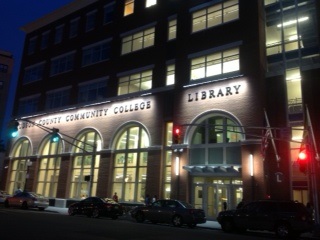
The new Library at Hudson County Community College Jersey City campus.
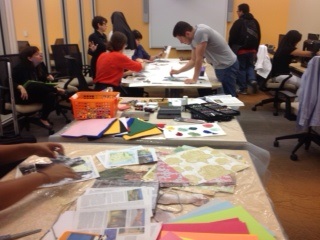
Students use the Makerspace at the new HCCC Library.
E-Book Attitudes and Obstacles at Jersey College
By Jessica Kiebler
The Jersey College Library is young in comparison to many of the other veteran academic libraries in the VALE consortium. However, like our peers and many libraries in the 21st century, we deal with similar student and resources issues. Currently, we offer over 200,000 e-books via EBSCO Host, many that deal with the medical topics that our nursing students study, but we still have lower than expected usage rates. In addition, many of our students enter school unfamiliar with libraries, library jargon or the concept of a database. Our team of academic librarians including myself at our Teterboro Campus, David Golann at our Ewing Campus and Rebecca Durney at our Tampa Campus have decided to study the issue through a program we’ve created.
There have been similar studies done in other academic libraries which our team has referenced while creating our plan. A study by Dinkleman and Stacy-Bates (2007) analyzed the obstacles to e-book usage presented by their library’s online catalog and presented specific recommendations that our team tried to implement on our website such as allowing an option to search specifically by e-book and creating a page the exclusively deals with e-books. Our team also referenced a study by Wendy Allen Shelburne (2009) at the University of Illinois which analyzed student and faculty attitudes towards e-books. While only 3% of her campus responded to a poll, she concluded that “while there is still a great deal of investigation and certainly even more development work remaining in the future of e-books, it is certainly clear from this survey…that users are very engaged and interested in the topic” (Shelburne, 2009). Her conclusions are promising and point to the idea that if specific attention to user needs is paid, e-books can be used often and effectively by students in the academic environment.
Currently, our team is in the information gathering stage. Students at our three largest campuses have been polled using SurveyGizmo and the poll was written with particular focus on the way students access our specific e-books. We will be analyzing these results to determine where our website, education sessions or e-books in general may be improved. After we have analyzed the responses, the results will be used to create targeted marketing materials such as posters, tri-folds and bookmarks to promote the collections. The posters will try to target specific benefits of using e-books such as no late fees, no books to carry and instant access as well as any additional benefits expressed from the poll responses. In addition, we will be adding features to the library collection to make the connection between existing books and e-books easier such as book and shelf labels.
After marketing materials are distributed, we will promote free-standing education sessions on e-books, e-book access and computer skills in addition to changing our current library information sessions to include more efficient explanations of e-books. Our information sessions currently have a section dedicated to how to access e-books however we hope that after understanding the specific answers from the surveys, we may be able to add additional information or update our current sessions to have a greater impact.
Our immediate goal for this project is to improve the usage of e-books at our college. However, our goals are higher arching as well. We know that nursing is becoming a more technology based field each day and we want to follow our college mission to send our students into the workforce prepared for the job ahead. Increased knowledge of searching and online resources will also allow our students to be more information literate and understand the value of libraries and information sharing. As our project continues, we hope to continue to share our findings with the NJ library community in the future.
References:
Dinkleman, A. & Stacy-Bates, K. (2007). Accessing E-books through Academic
Library Web Sites. College & Research Libraries, 68, (1), 45-58.
Shelburne, W.A. (2009). E-book usage in an academic library: User attitudes and behaviors.
Library Collections, Acquisitions, and Technical Services, 33, (2–3), 59–72.
Jessica Keibler is Head Librarian at Jersey College, Teterboro Campus.
Seeking Nominations for the Technology Innovation Award
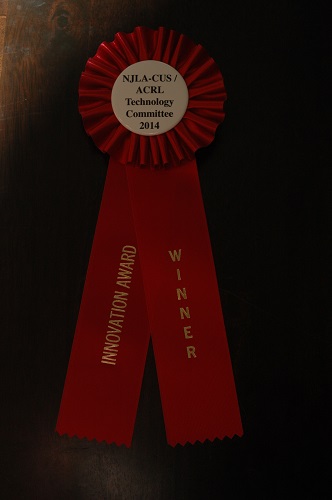 By John Hinchcliffe
By John Hinchcliffe
The Technology Innovation Award is given each year by the Technology Committee of the NJLA College and University Section. The award honors a librarian or group of librarians working in a New Jersey academic library who have adapted technology in a creative and ground-breaking way. Many New Jersey librarians are doing interesting work with technology and the award gives the Section an opportunity to salute that work, and for librarians to publicize accomplishments which might otherwise only be known to their local colleagues.
First given in 2002, the Technology Innovation Award has been given to recognize a variety of projects. The winners, other nominees, and details about some of the projects from 2002 to 2012 are listed here: http://cus.njla.org/content/q-what-library-technology-projects-have-been...
The 2013 winners and nominees can be found here: http://cus.njla.org/node/282
2014's winners and nominees are here: http://cus.njla.org/node/547
In 2013 the Tech Committee began awarding two awards: one for a project completed by librarians at a two year school and one for a project at a four year school. This was to better recognize the different challenges and resources at the different kinds of institutions. This past year the Committee branded the award as a "MacGyver" award, hoping to encourage the nomination of projects that include some repurposing of existing technology. The four year institution winner in 2014 was Rowan University's Medical Subject Searching Project. It solved tricky problems of displaying and searching the MeSH headings that describe the eBooks in their library catalog. The two year institution winner was Bergen Community College's project to exhaustively catalog in their ILS both the multimedia equipment installed in classrooms and the multimedia equipment which can be borrowed and moved around.
The CUS Technology Committee is once again looking to recognize librarians who have moved the use of technology forward at their institutions. Look for the Tech Committee's poster at the VALE conference on Friday, January 9, 2015. Committee members will be there to encourage nominations. The Committee will do its judging in the late Winter/early Spring and the 2015 award winners will present their projects at the NJLA conference in April. If you know (or are!) librarians who have done innovative work with technology, this is a chance for you to help spread the word about these accomplishments.
More information about the Technology Innovation Award and the nomination process is available from Alyssa Valenti (alyssa.valenti@raritanval.edu) and Romel Espinel (respinel@stevens.edu), co-chairs of the CUS Technology Committee.
John Hinchcliffe is a librarian at Bloomfield College.
